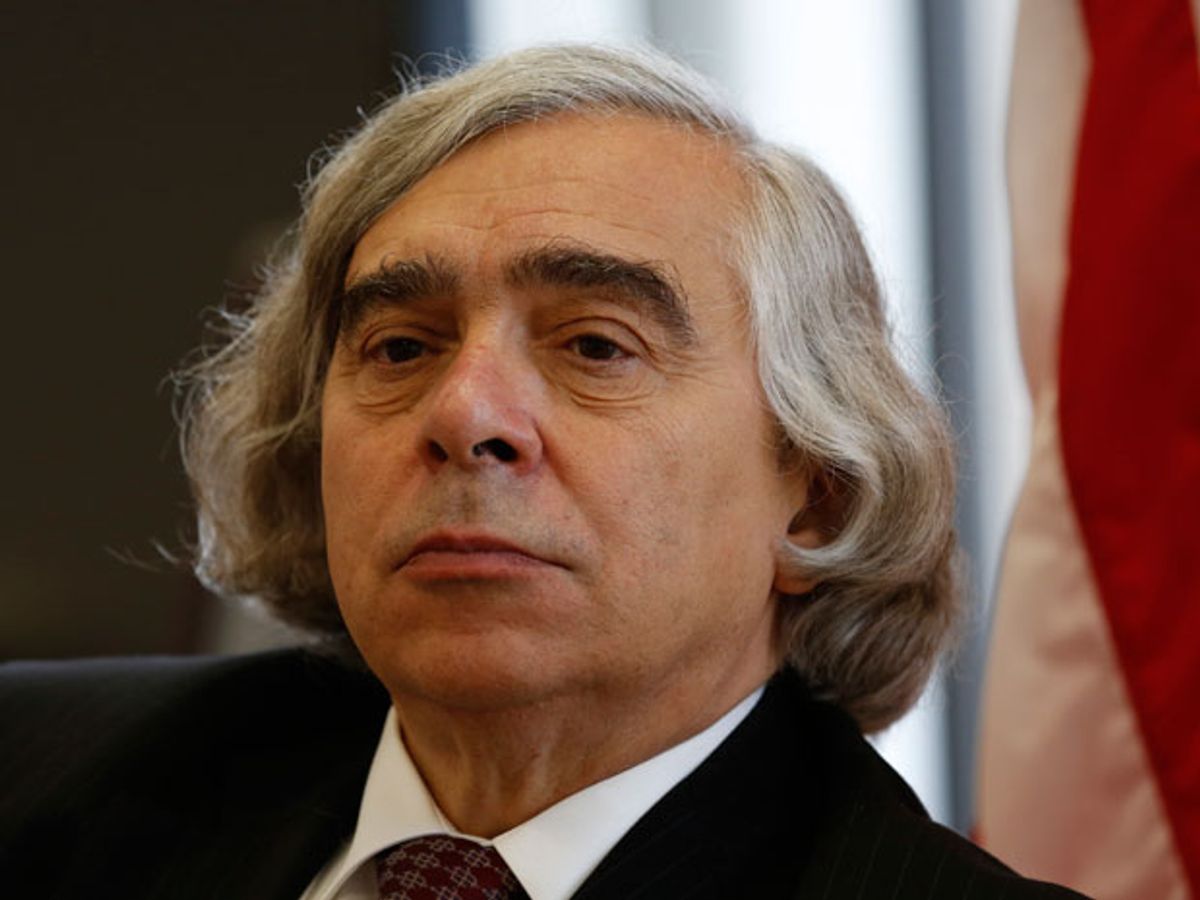If the most notable thing about President Obama's recent climate speech was the way he gave it, then the most telling thing about his energy secretary's elaboration on that speech, yesterday in New York City, was the size of the audience he attracted. On the last Monday of the North American summer, you'd think that anybody with the means would be in the mountains or at the beach. But some 200 people showed up to hear Secretary of Energy Ernest Moniz talk about the U.S. climate action plan at Columbia University, many of them standing around the walls.
Plainly, climate policy matters to members of the more highly educated public.
Moniz's approach to the subject was matter-of-fact and undramatic. Regarding the general issue of human-induced climate change, he said he has been accurately quoted before as having said that he "was not here to debate what's not debatable." As for the impacts of global warming on Gulf oil extraction, power stations, water availability, fuel transportation, and electricity transmission, he drew attention to a July energy department report on climate change and energy infrastructure.
Reminding his audience that the most bang for the buck can be obtained from improvements in energy efficiency, Moniz said that the department is formulating new standards for appliances on a schedule, starting with microwave ovens and halide lighting, to be followed by commercial refrigeration and electric motors.
Taking exception to the charge that the administration is waging a "war on coal," he said that taking action to reduce carbon pollution from coal is required by the president's "all of the above" approach to climate action. He said $8 billion has been earmarked for carbon capture and sequestration (CC&S).
Noting that energy subsidies almost inevitably prompt allusions to the Solyndra bankruptcy, Moniz said that Tesla obtained a high-risk, half-billion-dollar loan from the energy department in mid-2009. Now Tesla, having paid off that loan ahead of schedule, is making a car that's been rated the world's best and safest—one that's attracting, despite its high price, large numbers of orders abroad.
On renewables, Moniz presented slides showing sharp increases in deployment and sharp decreases in installed prices for wind, solar, LED lighting, and batteries. The cost of photovoltaic modules has come down so much, he said, that future solar gains will have to come largely from improvements in non-PV system components—a conclusion spelled out in a recent report from the Lawrence Berkeley Laboratory, "Tracking the Sun VI."
It turns out that "the future is not always ten years away," he said, surveying those dramatic gains.
On the controversial subject of natural gas fracking, the matter of overwhelmingly greatest concern to his Columbia University audience, Moniz observed that because of the revolution in gas, recent U.S. reductions in greenhouse gas emissions have been much greater than they otherwise could have been. We are already half-way to meeting Obama's 2020 pledge for such reductions, and half of that advance is attributable to utilities' switching generation from coal to gas. Still, he said, serious safety and water issues must be effectively addressed: "saying they are manageable is not the same thing as saying they are being managed."
On the next most controversial subject, nuclear waste, he said the administration supports a consensual, dual-track approach involving consolidation of spent fuel in regional dry cask facilities and development of a national repository for long-term geologic storage. Regarding the two new nuclear plants being constructed in South Carolina and Georgia with Federal loan guarantees, Moniz said the department will be watching closely to see if they are built on schedule and on budget.
Photo: Kevin Lamarque/Reuters



